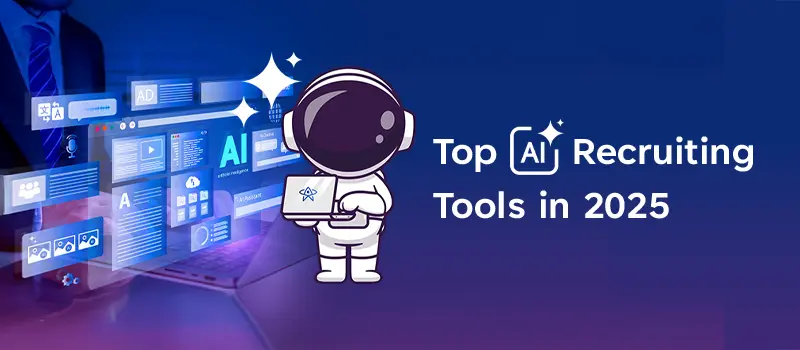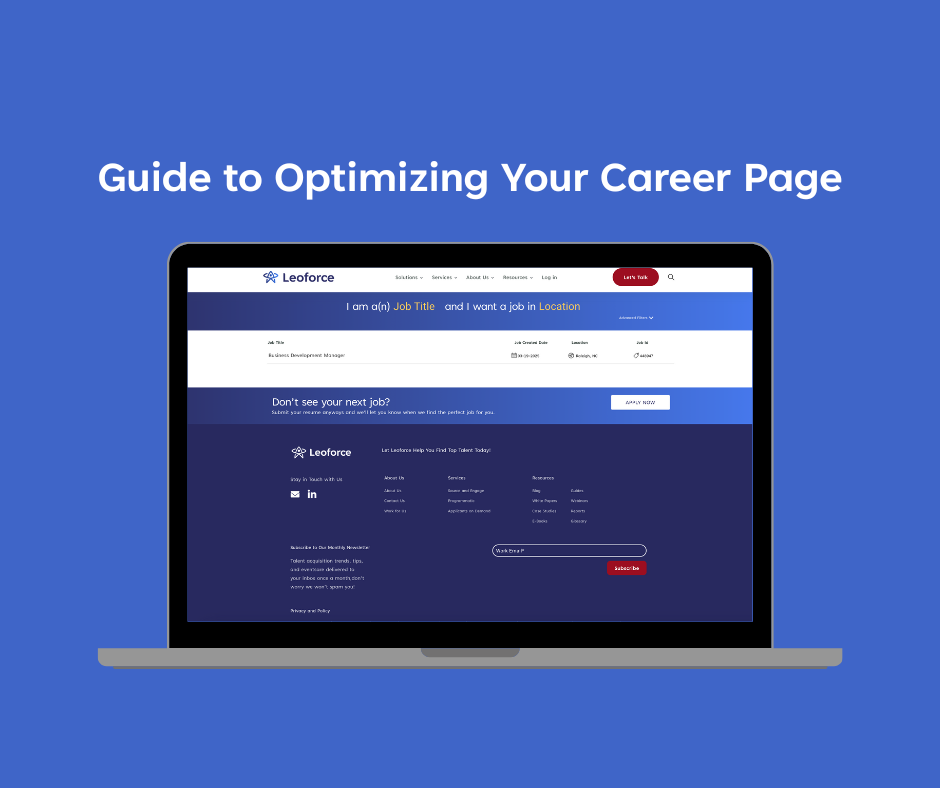Women and IT Hiring Trends: Recruiters Need to Do More!

If you have been in the tech industry for a while, think back to how many of your colleagues were women. Chances are, out of every ten men colleagues, you had three female colleagues. Even concerning is the gender ratio among those holding CEO or senior leadership role – it’s a bleak average of 1 female to every ten males.
Several statistics concerning women in the tech industry indicate how recruiters should do more to achieve gender diversity and balance in their organizations. Perhaps the most glaring one is the one by McKinsey’s findings on past hiring trend’s impact on women’s employment [1]: If organizations across the world fail to address gender inequality in the workplace, the global GDP in the year 2030 will touch levels which would be $1 trillion less than what it could have been. Fortunately, the same report also features the promising results of implementing DEI initiatives: the addition of $13 trillion to the global GDP.
Suggested reading on DEI hiring strategy: Blueprint to drive DEI hiring in the workplace
Below, we present some key insights collated from across the net to highlight the state of the gender ratio in the tech industry, the repercussions of an imbalanced gender ratio, and trends to pick up on for healthy growth.
Women in technology roles – Key Facts & Insights
There are insights from experience, and then some backed by the data itself, which are more reliant on outlining and executing gender-neutral hiring. However, several key aspects should be noted by recruiters, who clearly have a lot more to do to ensure a more equitable environment for hiring women in the IT industry.
Lesser Women in Senior Software Engineering Positions
Recent studies indicate that the number of women in software engineering positions comes down with increases in seniority. The study sees how the absence of women in significant leadership roles usually leads to lower financial success and more women departing from technology jobs due to the lack of proper female mentorship [2].
In addition, attrition rates are considerably higher for women in technology positions than men, thereby vindicating the above findings. According to reports, just 30% of women (holding engineering degrees) remain in the engineering field two decades later. Many of these women have shifted to non-technical jobs or left the formal workforce. This is almost twice that of men in similar job positions, as reported [3].
Abysmal gender diversity in terms of engineering degrees and recruitment
A Pew Research study shows that women attained only 22% and 19% of bachelor’s degrees in engineering and computer science (respectively) [4]. Women also achieved just 30% of doctoral and master’s degrees in these fields. Those technology companies and employers with partnerships and pipelines built with leading universities should remember that women are not always adequately represented at placements. At the same time, they should also create interview processes and assessments that are based solely on merit. Women studying technology courses should list diverse and inclusive companies before they start applying.
Remote work is a great leveler for women in tech
The COVID-19 pandemic demonstrated how women had to deal with more familial and other responsibilities as compared to the past, and 51% of women had to take on the responsibility of providing academic and educational support. In comparison, 46% had to deal with elderly or adult care as well [5]. For women working in engineering positions, remote working is an excellent and viable method of enabling more flexibility for them. This will help them gradually scale up their professional responsibilities while accessing all core functionalities digitally. This aspect will also significantly boost retention rates for women in the tech workforce.
Gender pay gap still exists
There has been a long-standing issue of the pay gap since long. Even in 2022, the pay gap still stands at 17%, translating to females getting almost $20 less for every $100 a male worker makes [6].
Proper job advertisement language gets women to apply more
The language used for advertisements and benefits greatly draws more women to apply for tech positions. Studies report how almost 50% of women apply for jobs based on future growth opportunities, salaries, training, WFH scope, and flexibility.
Most women are attracted to companies that openly talk about diversity
Studies reveal how 88% of women are more attracted to organizations that openly discuss diversity hiring and talk about their DEI at workplace initiatives. Most women always prefer companies promoting diversity, equity, and inclusion in the workplace.
Women still hold lower jobs in computing
While we’ve talked about leadership or senior roles, the overall picture is not too encouraging either. Just 26% of women have jobs in computing worldwide. The only silver lining is a 1% increase in this figure from 2021 onwards [7].
Another study in 2020 by the AnitaB.org Institute revealed how just 28.8% of the technology workforce is made up by women [8]. However, this has gone up from 26.2% in the year 2019. The study reports that achieving equal female representation in the technology industry may take another decade at the present rates.
A well-rounded approach toward gender diversity hiring
Research conducted by the SHRM (Society for Human Resource Management), Harvard Business Review Analytic Services, and Trusaic saw how DEI initiatives from the top-down fused with consistency in data analytics were a winning combination towards building a more inclusive workplace [9]. Companies are more likely to shift towards building gender-balanced teams when the agenda is set out by their CEOs and top management.
Companies should periodically gather and analyze data on their workplace diversity, equity, and inclusion practices while publishing the same for employees to examine. A head or officer for DEI may also be a good idea for managing all company initiatives in this regard.
Conclusion
Better representation of women in the global workforce would equate to higher revenues, innovation, and immense benefits. Gone are the times of gender-regressive environments, as companies are clearly discovering the benefits of diversity, equity, and inclusion in the workplace. However, as many of these facts clearly indicate, recruiters and companies still have miles to go before we can expect a more equitable world for women, particularly in the technology industry.
One of the ways to enable gender-neutral hiring is through the deployment of AI recruiting software tools that source and screen candidates from a broader perspective while eliminating biases along the way. Tools like Leoforce by Leoforce come with built-in diversity so you can fine-tune your diversity strategy. To see how it can help you with hiring for gender diversity, take a demo today.
FAQs
What is gender diversity in a workplace?
Gender Diversity refers to hiring men and women at comparable rates, being compensated equally, and given the same working chances with equal advancements.
What is the impact of gender diversity?
There are various benefits of gender diversity, including the presence of various viewpoints and a boost to creativity and innovation. Additionally, gender-neutral hiring supports your business in challenging gender norms, which can help you market your company as gender inclusive!
What are the challenges of gender diversity?
The major challenges still facing women in the workplace depend on cultural factors that limit progress, including unequal pay, bias in promotion, and even sexual harassment.
How to promote gender equality in recruitment?
The steps you can take to promote hiring for gender diversity include: using gender-neutral language in job descriptions, providing organizational training around bias, and involving more people in the interview process. In addition, organizations need to track the diversity numbers consistently and steer their DEI hiring efforts accordingly.
Resources
[1] https://www.mckinsey.com/featured-insights/diversity-and-inclusion/seven-charts-that-show-covid-19s-impact-on-womens-employment
[2] https://ecm.capitalone.com/DevExchange/assets/PDFs/WIT_Report_2019.pdf
[3] https://www2.deloitte.com/za/en/insights/topics/value-of-diversity-and-inclusion/diversity-and-inclusion-in-tech/recruit-and-retain-experienced-women-in-technology.html
[4] https://www.pewresearch.org/science/2021/04/01/stem-jobs-see-uneven-progress-in-increasing-gender-racial-and-ethnic-diversity/
[5] https://swe.org/research/2021/covid-19-research/
[6] https://www.johnleonard.com/blog/2022-gender-pay-gap-statistics-infographic
[7] https://techjury.net/blog/women-in-technology-statistics/
[8] https://anitab.org/research-and-impact/top-companies/2020-results/
[9] https://www.shrm.org/hr-today/trends-and-forecasting/research-and-surveys/Pages/DEI-Metrics-.aspx





